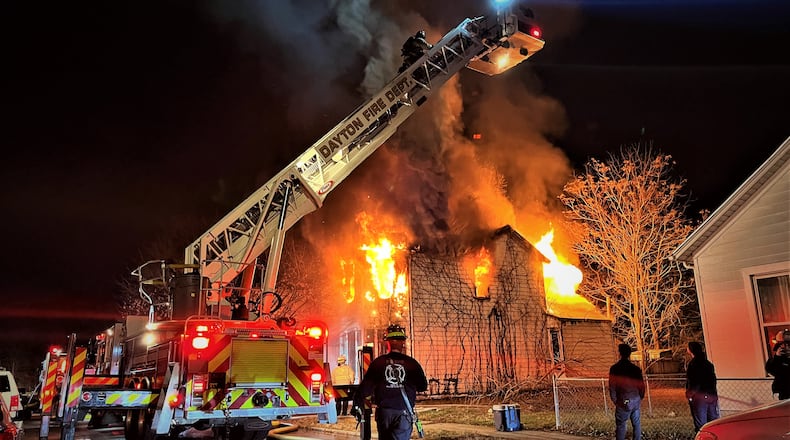While this round of grants was primarily for wellness programs, the city of Dayton was among four agencies that received much larger sums ($1.5 million and up) for hiring and retaining 10 or more firefighters. Dayton will receive over $5.8 million to hire 30 full-time firefighters for two years. The money will also pay for a full-time wellness coordinator and coordinator training, wellness checks with three follow-up visits, mental and physical readiness assessments, and recommendations.
Dayton Assistant Fire Chief Nicholas Hosford said DFD has seen a significant impact on personnel due to increased workload, emotional, physical, and mental stress, as well as mandatory staffing to ensure effective services during the COVID pandemic.
“These funds will greatly benefit the department and our ability to serve the community,” Hosford said.
Credit: Marshall Gorby
Credit: Marshall Gorby
The Dayton Fire Department declined to comment Tuesday on the details of how and when those firefighters will be hired, as well as current and targeted staffing levels. But recent discussions at city meetings shed light on current conditions.
During city budget discussions this fall, Dayton fire Chief Jeff Lykins said DFD was working to improve response times on fire calls and EMS calls. He said they were close to meeting EMS goals, but were hitting response time standards on fire calls 47-54% of the time, when the city’s goal is 70%. Lykins said the sheer volume of emergency runs is the main challenge to meeting these goals, but travel time also is a factor.
The city expects to spend about $38.1 million next year on fire strategic safety programs, fire support services and fire suppression EMS, up nearly $2.6 million from original budgets.
Melissa Wilson, Dayton’s deputy director of procurement, management and budget, said the change reflects a temporary increase in authorized manpower to lessen overtime usage.
The increase also will support a pilot program deploying an additional ambulance with emergency medical technicians only (rather than a higher-trained paramedic) for basic life support calls, she said. The city wants to provide some relief to crews that are handling 13 or more runs each day, Deputy City Manager Joe Parlette said.
The grant money is part of $75 million in American Rescue Plan Act funds that has been set aside for law enforcement agencies, dispatch centers, fire and EMS departments, to address burnout caused by understaffing and job stress.
“We’ve had a great deal of interest in this grant program, and it’s good to see that so many first responder agencies prioritize employee wellness,” said DeWine. “These grants provide agency-specific support to help first responders remain on the job so that they can continue to keep Ohioans safe.”
In addition to hiring, Hosford said Dayton’s funding will allow members to receive additional visits with a clinician as needed, and will provide a mechanism for the clinician to respond to critical incidents, Hosford said, adding that the program helps in “changing the culture regarding behavioral health for the betterment of the members.”
The city of Xenia’s grant funding will go towards providing firefighters with wellness evaluations, counseling and calcium heart testing, which is designed to detect cardiovascular issues in the body, such as blocked arteries or extreme plaque buildup, long before symptoms ever occur.
This is particularly critical for firefighters, who are at a greater risk of cardiac problems compared to the general public, according to the National Institutes of Health.
Funding will provide a test at year one and again at the end of the grant to aid in tracking the benefits of treatment, a spokesperson for the city said.
“Our employees are our greatest asset and the culture and philosophy of our departments emphasize our employees’ well-being,” said Xenia Deputy Fire Chief Mike Bogan. “We are grateful to Governor DeWine and this grant program for the opportunity to further invest in our public safety personnel.”




